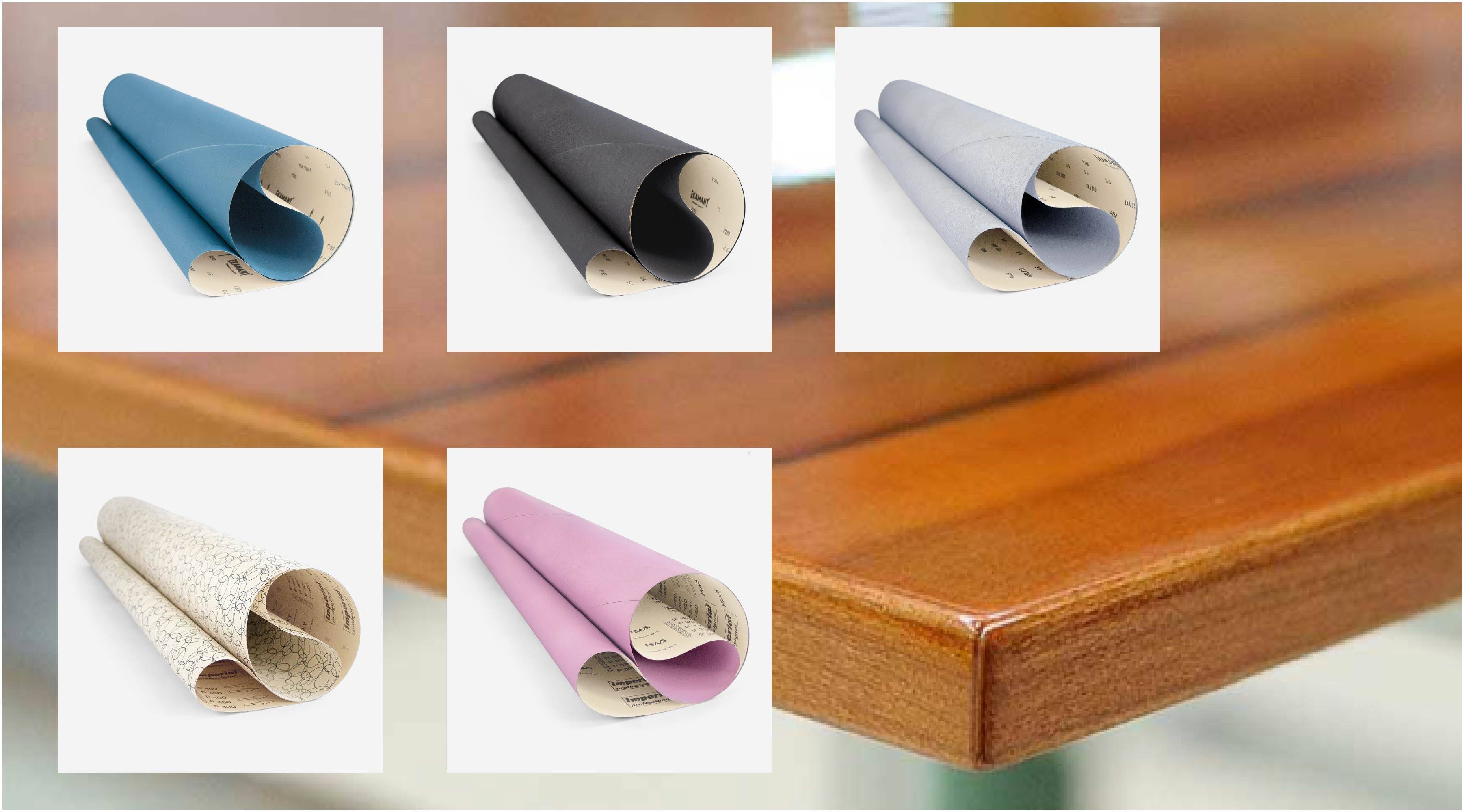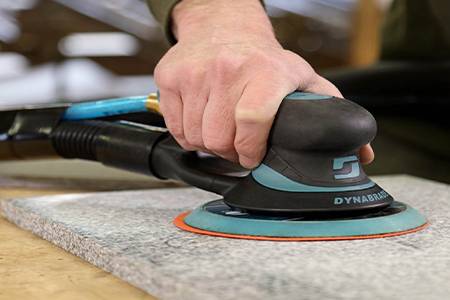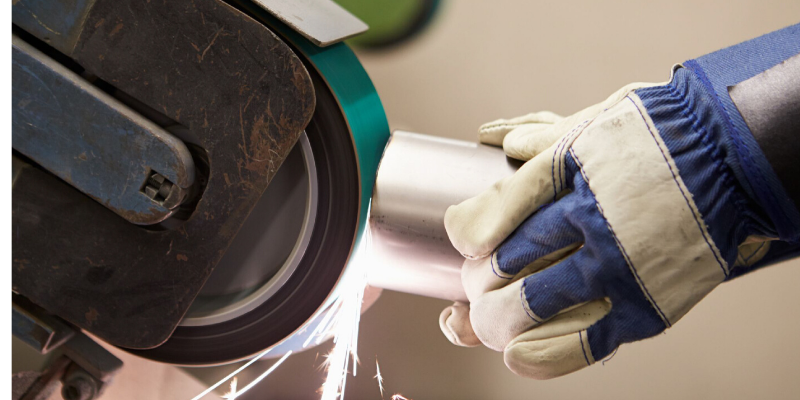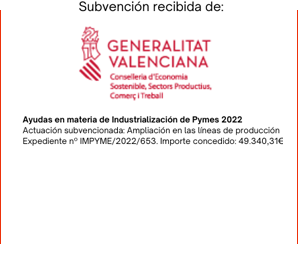¿Necesitas un lijado de precisión sin dañar superficies delicadas? Descubre las ventajas del disco de espuma estándar...
}How to use abrasive belts safely
Like all work tools, abrasive belts used incorrectly can be very dangerous. To avoid situations of risk and personal injury, it is advisable to take into account the advice shown below.
The precautions to take with abrasive belts begin long before direct use. To do this, we must carry out a safe storage, use the necessary personal safety equipment, carry out an adequate assembly on the machine and adopt a series of precautions when using the sanding belts.
Today, sanding machines incorporate effective safety measures to prevent accidents and personal injury. Keeping these devices in good condition is necessary for job safety. In the same way, we must not override or manipulate the door security sensors, unless it is necessary for the repair or maintenance of the machine.
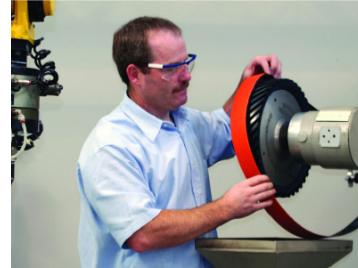
Seven tips to keep in mind to use abrasive belts safely
1. Abrasive belts need to be stored in appropriate conditions of temperature and relative humidity (temperature between 18-20ºC and HR between 45-65%). If these conditions are not suitable, the belt supports dry out and become brittle or, on the contrary, become damp, lose firmness and resistance, and creases or wrinkles may be generated during operation, which as a general rule usually end in an unexpected breakage of the band. If you want more information, visit our article: Wide sanding belts: handling, storage and conservation
2. Before placing the sanding belt on the sander it is a good idea to do a simple visual check of the belt and confirm that there are no cuts or tears at the edges of the belt. We must be especially careful with large-sized abrasive belts, since when pulling them out of the package we can cut ourselves with the edge of the belt, which acts like the edge of a knife. With very coarse grains, grains 16, 24, 36, 40… it usually causes cuts and wounds on the hands and scratches on the forearms in the event of any abrasion.
3. A critical moment for safety during sanding work is the action of positioning and tensioning the abrasive belt on the machine. Depending on the size of the belt and the accessibility to the pulleys of the sanding unit, unseen bends or cuts can be caused in the belt itself, which as a general rule end in unexpected breakage to the surprise of the operator.
4. Once the sanding belt has been placed on the pulleys, it is convenient to turn on the machine and run it without workload for a few seconds. During this time we must ensure the correct operation of the band and be attentive to strange noises that may reveal any damage or anomaly.
5. There are sanding groups where the abrasive belt works together with a cooling belt with felt sheets. If this pressure band has cuts or damages, these will be transferred to the abrasive belts, for this reason, we must also check the condition of the felt band.
6. The tension of the abrasive belt must be adjusted to the pressure values indicated by the manufacturer of the sander, it is not an exact value and the tolerance is usually plus-minus 1 bar. With a low tensioning pressure the belt will remain slack and may slip and come off during operation. Conversely, excess tension could cause the tape to break at any time.
7. During hand sanding work we must avoid sanding on the edges of the abrasive belts. We must never touch the abrasive belt during its operation as it would cause serious injuries.
Contrary to what is often thought, mounting an abrasive belt (whose union joint is superimposed or overlapped) with the direction of rotation the opposite of what is established will not cause the belt itself to break. When this circumstance occurs, the sanding dust accumulates and compacts on the joint itself and ends up, the band ends up generating joint marks on the sanded surface.
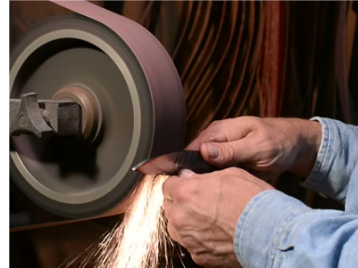
Why should we use personal safety equipment?
Sanding jobs with abrasive belts are very varied, and depending on the type of industry and the type of machine used, personal protection elements may or may not be mandatory. In general, we must take the utmost precautions in all manual sanding work on those machines that are not closed or that do not have hoods to protect against belt breakage.
Eye protection glasses protect the eyes from sparks or dust particles released at high speeds that can cause us a real problem. Sparks should always be directed downward, away from the operator's face or body, and avoid near flammable material. The glasses used must have side protection since the detached particles can slip through the sides.
Protective gloves are especially necessary for manual sanding jobs where the operator holds the part and presses it against the moving abrasive belt. They should have a minimum level of protection EN388 category 2. For the protection of clothing, it is advisable to use an apron that protects us against sparks. The apron must be made of non-flammable material such as leather.
Masks help us reduce the risks of inhalation. Abrasive tools must be used with efficient suction systems or in well-ventilated areas since the dust generated when working with some materials can be very harmful to health.
Hearing protection is recommended, according to the EN352 standard, in all cases where the work is carried out manually, regardless of the noise level.
At Abracom we consider our clients to be part of our family, for this reason, we ensure their safety and we offer them this list of useful tips to use abrasive belts safely.





